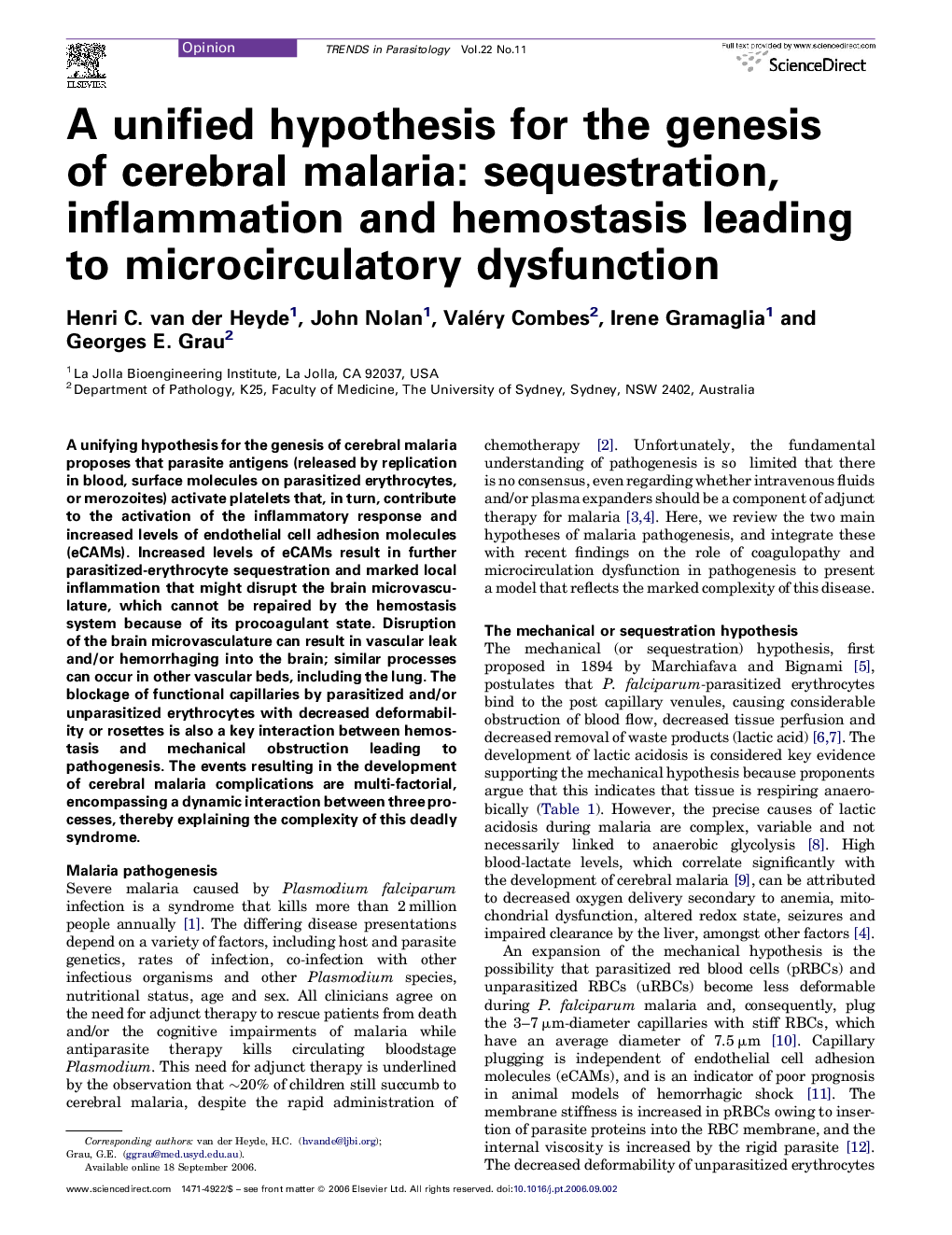| Article ID | Journal | Published Year | Pages | File Type |
|---|---|---|---|---|
| 3423764 | Trends in Parasitology | 2006 | 6 Pages |
A unifying hypothesis for the genesis of cerebral malaria proposes that parasite antigens (released by replication in blood, surface molecules on parasitized erythrocytes, or merozoites) activate platelets that, in turn, contribute to the activation of the inflammatory response and increased levels of endothelial cell adhesion molecules (eCAMs). Increased levels of eCAMs result in further parasitized-erythrocyte sequestration and marked local inflammation that might disrupt the brain microvasculature, which cannot be repaired by the hemostasis system because of its procoagulant state. Disruption of the brain microvasculature can result in vascular leak and/or hemorrhaging into the brain; similar processes can occur in other vascular beds, including the lung. The blockage of functional capillaries by parasitized and/or unparasitized erythrocytes with decreased deformability or rosettes is also a key interaction between hemostasis and mechanical obstruction leading to pathogenesis. The events resulting in the development of cerebral malaria complications are multi-factorial, encompassing a dynamic interaction between three processes, thereby explaining the complexity of this deadly syndrome.
